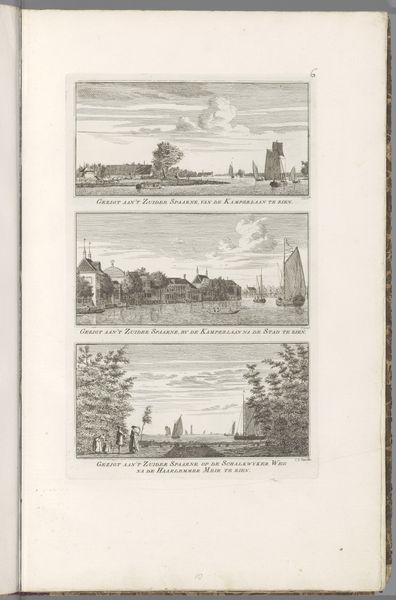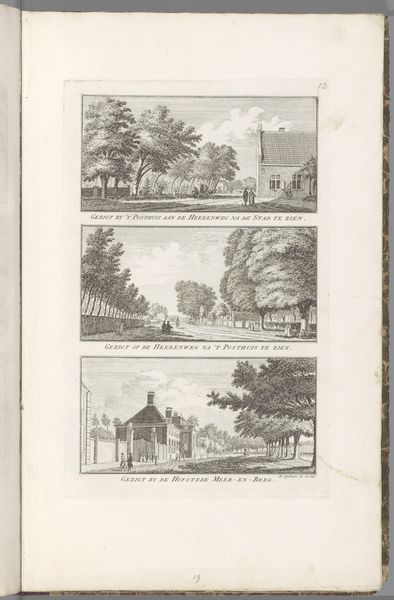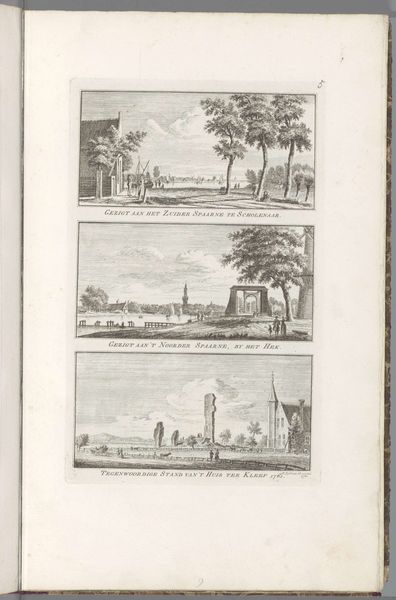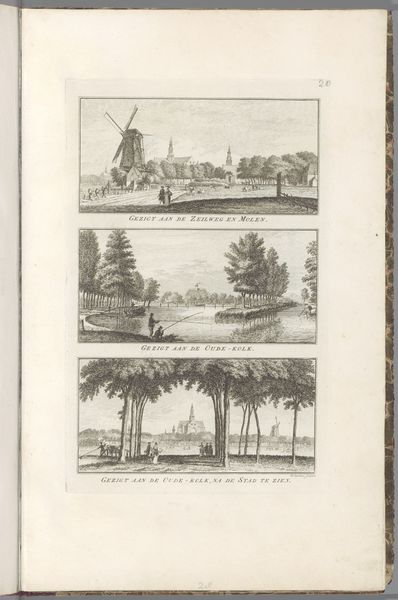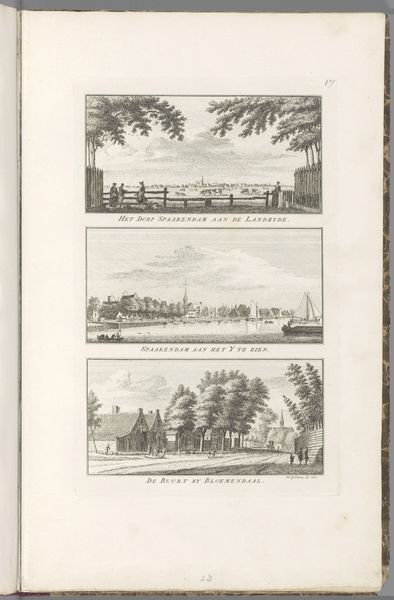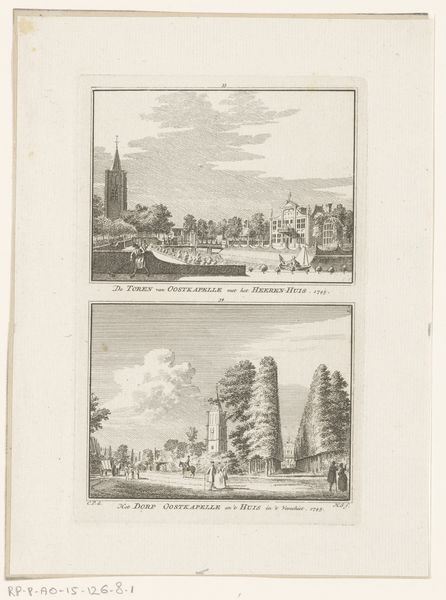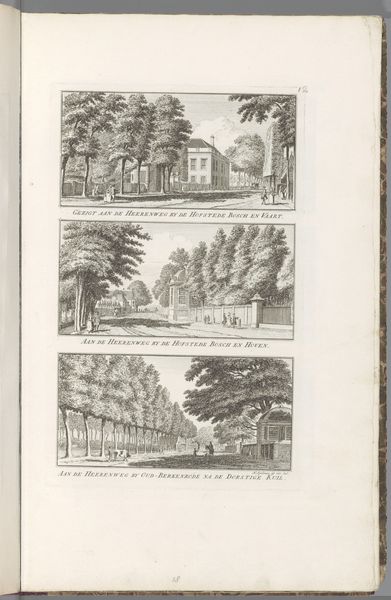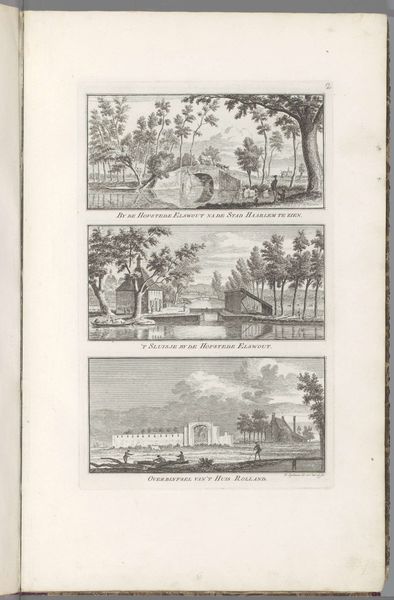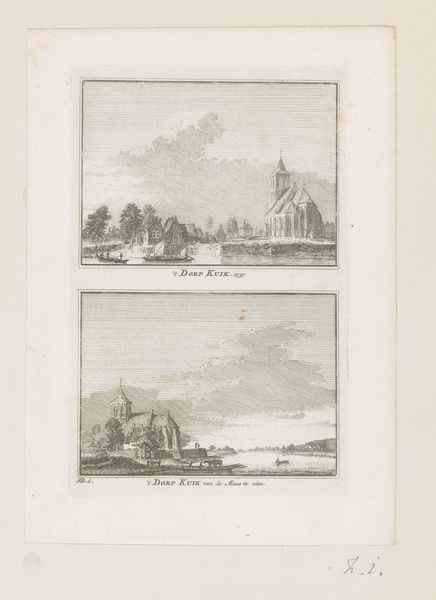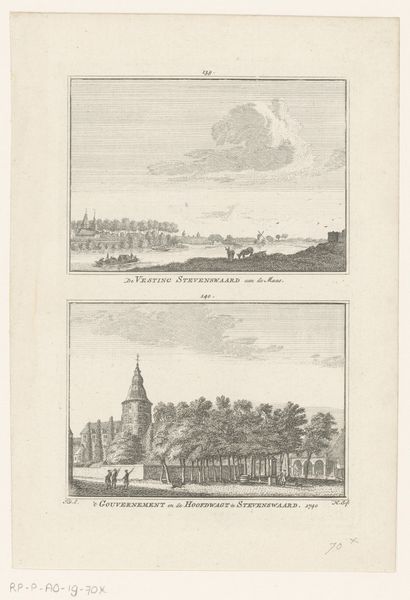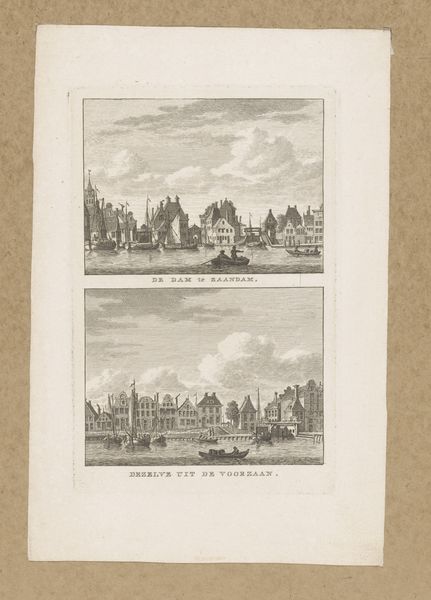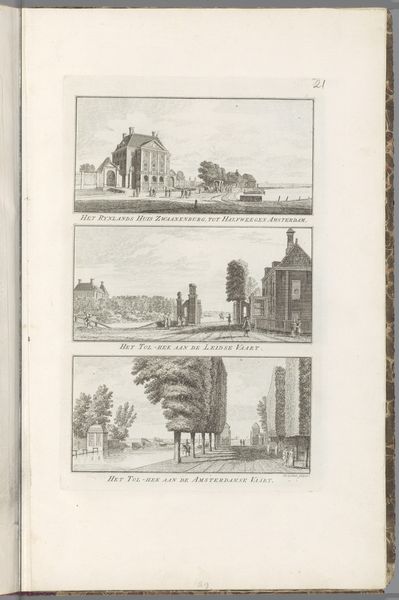
print, engraving
#
dutch-golden-age
# print
#
landscape
#
river
#
cityscape
#
engraving
Dimensions: height 298 mm, width 189 mm
Copyright: Rijks Museum: Open Domain
Editor: This is a print from 1762-1763 by Hendrik Spilman, called "Zuider Spaarne en Leidsevaart bij Haarlem," and it’s at the Rijksmuseum. The work contains three separate engravings, which seems quite economical. I’m struck by how the scenes present a calm, industrious relationship between the Dutch and the waterways. What's your read on this? Curator: Spilman's print offers three distinct views that were designed to be consumed by a rising class of tourists interested in picturesque scenes and local landmarks. Each panel encapsulates a different vantage point along Haarlem’s waterways. Think of these prints as visual documents shaping Dutch identity. Editor: Dutch identity, how so? Curator: Absolutely. The deliberate inclusion of windmills, ships, and defined architectural elements isn’t accidental. What role do you think these recurring images play in reinforcing social and economic structures? Editor: Well, the windmills definitely speak to the region’s technological innovation…and the boats reflect on their reliance of canals for trade and travel. These must be symbols of the success of the region and Dutch ingenuity? Curator: Exactly! This is very much a romantic vision—likely omitting the less savory parts of Dutch society for popular consumption. We might consider that the scenes are composed, constructed realities rather than impartial recordings. The framing itself performs a kind of nation-building. Editor: Interesting…so by emphasizing certain details and conveniently omitting others, the artist created a public image and shaped perception of the region and its identity. Thank you, this puts it into a new context! Curator: My pleasure. Now when you view other art, consider not just what’s present, but what is intentionally excluded, and you’ll start seeing the hidden agendas and historical narratives in art.
Comments
No comments
Be the first to comment and join the conversation on the ultimate creative platform.

